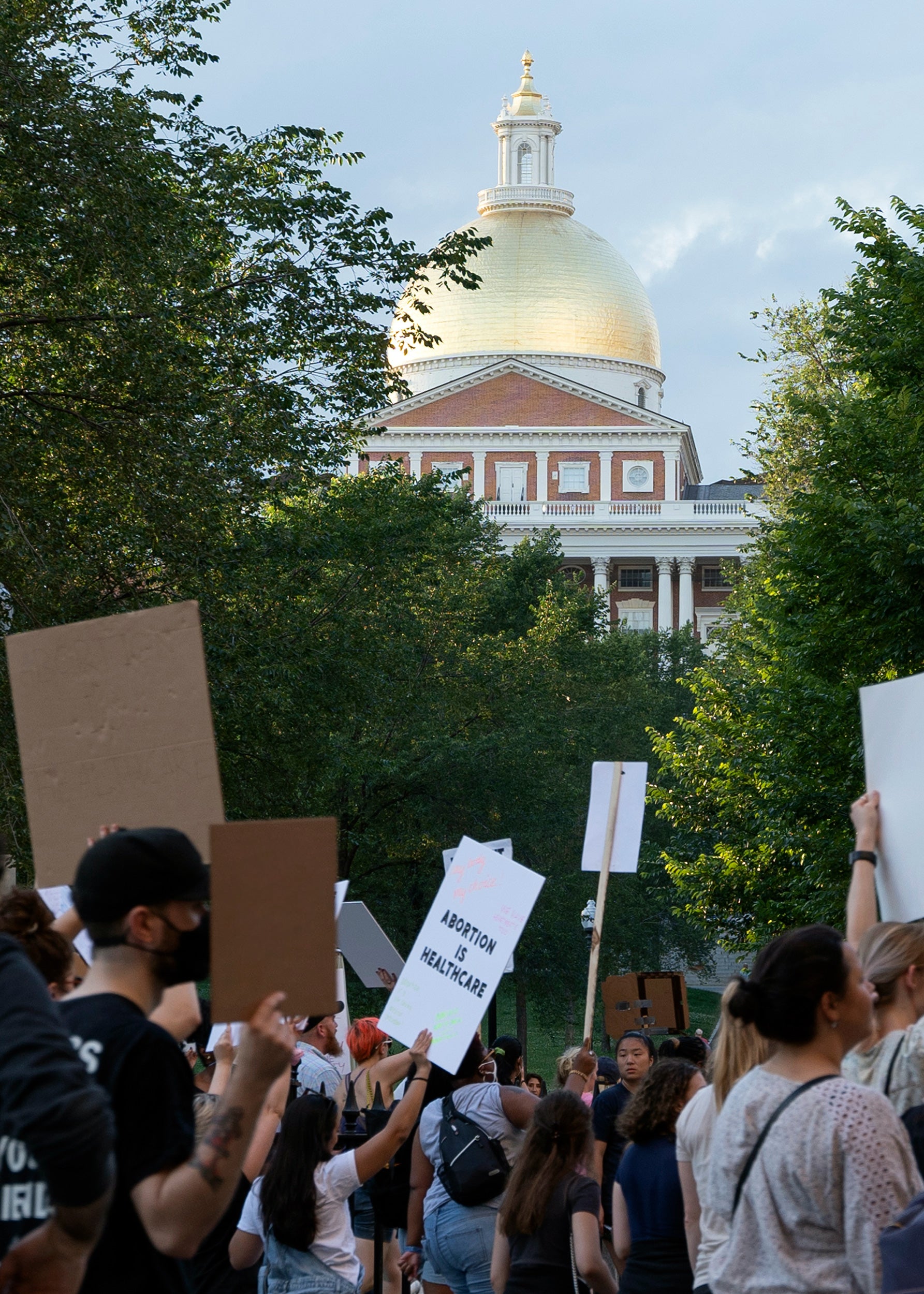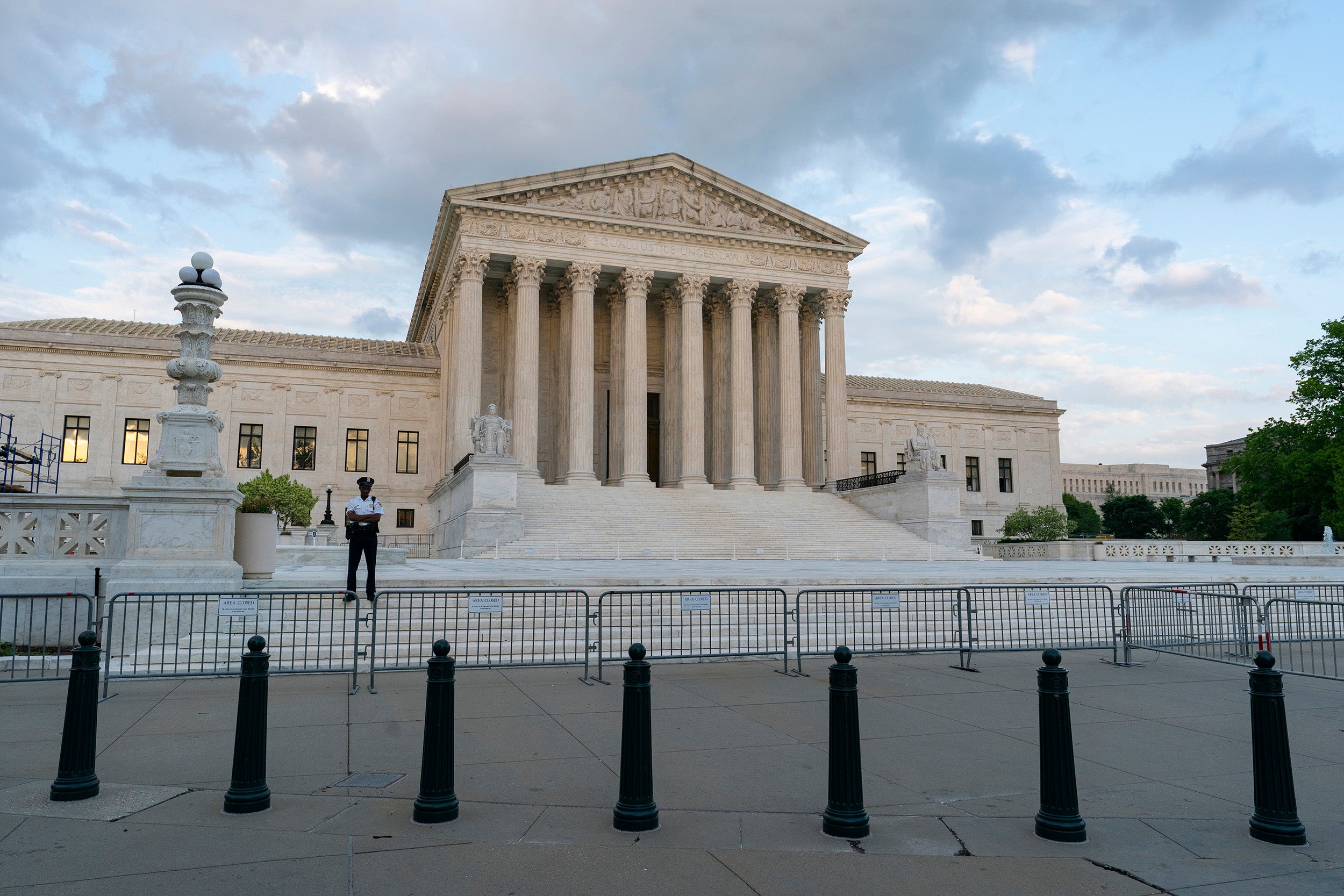
AP file photo
Mass. sees more out-of-state abortion patients post-Dobbs
Women are traveling from states as far away as Texas for care, finds Brigham and Women’s study.
A new study confirms a rise in travelers from states as far away as Texas, Louisiana, Florida, and Georgia visiting Massachusetts to seek abortion care since the Supreme Court’s Dobbs decision in June 2022.
In addition to the estimated 37 percent increase in residents outside Massachusetts seeking abortion care here, investigators from Brigham and Women’s Hospital found nonprofit funding covering costs for out-of-state patients more than doubled. Results are published in JAMA Network Open.
“Before Dobbs, there was conjecture that certain states would get all the interstate traveling patients based on geographic proximity to states with complete abortion bans,” said corresponding author Elizabeth Janiak of the Division of Family Planning at the Department of Obstetrics and Gynecology. “After Dobbs, we set out to understand how many out-of-state travelers come to Massachusetts for abortion care, and how they cover the cost of care.”
When Dobbs v. Jackson Women’s Health Organization overturned the constitutional right to abortion, it resulted in rapid changes to state laws, including 15 complete bans. Since then, there has been a documented increase in interstate travel to access abortion care in permissive states neighboring those with bans. Even before Dobbs, abortions were expensive and 60 percent of patients paid for them out of pocket, in part due to bans on abortion coverage in Medicaid and Medicare programs, a lack of coverage by private insurance, or fear of a confidentiality breach if insurance were used.
“Interstate travelers face elevated financial stress from additional travel expenses and the stigma of abortion, which prompts many people to be secretive about their abortion experiences,” Janiak said. “We wanted to understand how the allocation of funding for abortion care and travel by various nonprofits and charities changed after Dobbs, since abortion can cost hundreds or thousands of dollars.”
The researchers conducted a retrospective review of 45,797 abortion care records from January 2018 to October 2022 at the Planned Parenthood League of Massachusetts. Then, they used time series analysis, a statistical tool commonly used to understand trends in health service utilization, to estimate the expected number of abortions after Dobbs, based on the observed number before.
“A major strength of our study is the large data set of pre-Dobbs abortions,” Janiak said. “We used rigorous statistical modeling to understand how the number of abortions in the four months after Dobbs compared to the expected counts we predicted. Because of the large historical data set, we know that these are real changes and not chance fluctuations.”
When observed counts were compared to expected counts, there was a 6.2 percent increase in the total number of abortions. Notably, when data were stratified by state of residence, there was a 37.5 percent increase in the number of out-of-state residents, which is about 45 additional abortions.
“We’ve always had abortion travelers from New England, but now we see that we have people coming from much farther away, like Texas, Louisiana, Florida, or Georgia,” Janiak said.
Notably, the proportion of out-of-state residents receiving abortion funding increased by nearly 10 percent post-Dobbs, from approximately 8 percent to 18 percent, while in-state residents’ use of funding increased by only 1 percent, from 2 percent to 3 percent, over the same period.
“Abortion costs are already well above the average out-of-pocket medical expenditures for reproductive-age females in the United States,” Janiak said. “In the post-Dobbs context, interstate travel costs are even higher.”
Thus, although Massachusetts does not border any states with an abortion ban, the number of patients traveling and accessing charitable funding increased after Dobbs.
“In states like Massachusetts, we know the state government as well as advocates and healthcare providers are very invested in ensuring abortion access,” Janiak said. “We hope the data from this study serves as an example of how states across the country that share this commitment can monitor the trends in and needs of interstate travelers.”
Limitations of the study include using data from a single clinical source that might not be representative of the entire state. Still, the rapid and disproportionate increase in out-of-state residents seeking care at the largest abortion care provider in Massachusetts reflects a crucial need to assess and strengthen abortion service infrastructure in non-ban states.
“To my knowledge, this is the first analysis of state-level abortion volume changes post-Dobbs using medical record data, and definitely the first in a non-surge state,” Janiak said. “Next, we want to get a more nuanced picture of the barriers people are encountering and how they’re overcoming those barriers to travel for abortion.”
Specifically, her team is surveying interstate travelers and in-state residents seeking abortion care in Massachusetts and beyond. They are tracking gestational age, pregnancy outcomes, underlying healthcare characteristics, and the psychosocial stress associated with travel for abortion, with the goal of using study results to promote greater equity in abortion care.
Researcher Isabel Fulcher reports being employed as the vice president of data science at Delfina Care. Funding: None.


